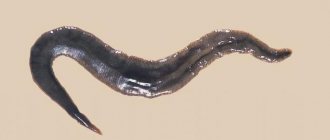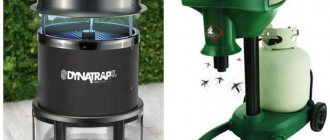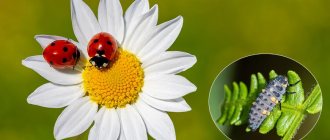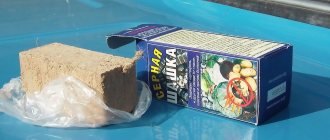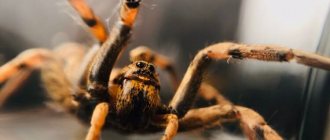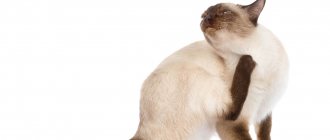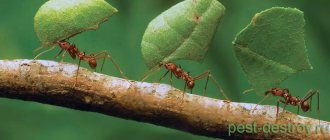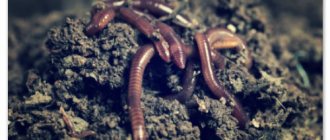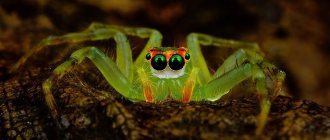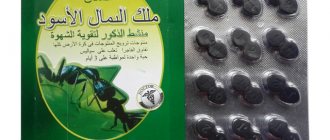Pollock, which in Soviet times had a firmly established reputation as “food for cats,” today is becoming more and more firmly part of the diet of the average resident of the post-Soviet space every day, which is explained by the low price of this fish against the backdrop of the economic crisis. This seemingly positive trend carries a hidden danger, since pollock ranks among the first among marine fish in terms of the degree of parasite infestation. In this article, we intend to understand what types of worms parasitize representatives of this type of fish, how dangerous the worms in pollock are to humans, and whether it is permissible to eat fish infected with them.
The reason for the growing popularity of pollock
Pollock is a fish with a very interesting fishing history.
At the end of the 40s, a Soviet expedition organized by the Institute of Oceanology of the USSR Academy of Sciences, having discovered huge accumulations of pollock in the coastal zone of Kamchatka, considered it a non-food fish. Until the 60s of the 20th century, fishermen threw their entire pollock catch overboard. There were several reasons for this: both the abundance of parasites in this fish and the high catch of more tasty and expensive cod - a close relative of pollock, which at that time was not yet endangered.
Somewhat later, the USSR government revised its policy, and pollock not only began to be harvested purposefully, but also took second place in terms of production volume, second only to blue whiting. However, even then this type of fish was not perceived as normal food.
Initially, it was caught exclusively for caviar, liver and fish oil, while the carcasses were still thrown overboard.
Later, part of the pollock carcasses began to be processed into fishmeal; the other part went to fur farms; the third went to prisons, military units, hospitals and other unpleasant places; and, finally, the remaining catch went on sale, most often ending up in the stomachs of cats.
In the early 70s, the European media were flooded with news about the danger of nematodes, which always parasitize pollock in abundance. This wave of criticism towards the fish, which had just begun to become popular among the population, soon reached the USSR, and from then on pollock finally became a food for the poor and “cat food” (there was even a saying “Pollock is a fish for cats”).
The traditional dislike for pollock continued to persist until the 21st century, when the economic crises of 2008 and 2014–2015 forced the poor and middle segments of the population to tighten their belts and “try” cheap pollock. In terms of taste and nutritional value, this type of fish is only slightly inferior to its relative, cod, and after careful heat treatment it becomes no more dangerous than any other fish.
There are white balls inside the pollock, what are they?
Pollock, which in Soviet times had a firmly established reputation as “food for cats,” today is becoming more and more firmly part of the diet of the average resident of the post-Soviet space every day, which is explained by the low price of this fish against the backdrop of the economic crisis.
This seemingly positive trend carries a hidden danger, since pollock ranks among the first among marine fish in terms of the degree of parasite infestation.
In this article, we intend to understand what types of worms parasitize representatives of this type of fish, how dangerous the worms in pollock are to humans, and whether it is permissible to eat fish infected with them.
What helminths can parasitize pollock and are there dangerous ones among them?
Pollock with worms is indeed not uncommon: for example, according to a 1997 study, 34% of individuals of this fish species are infected with anisakids - roundworms (nematodes) dangerous to humans from the Anisakidae family. In this regard, only silver hake (53% of the population is infected with anisakids), Japanese mackerel (100%) and Pacific herring (100%) can compete with it.
Despite the fact that anisakidosis was described in fish back in the 13th century, in marine mammals in the 18th century, and the first case of human infection was recorded in 1867, anisakidosis is a fairly new problem in parasitology. The ability of the larvae of these helminths to infect humans was only reliably established in 1955, when a resident of the Netherlands went to the hospital after eating lightly salted herring. It was then that the disease got its name - anisakiasis, and parasitologists and doctors paid attention to this helminth.
The mechanism of development of symptoms and possible complications of anisakidosis are a topic for a separate article, but it is enough to know that anisakidosis most often settles in the wall of the stomach, an organ protected from any other parasites. Although anisakid larvae are not able to develop into adults in the human body and live from several weeks to 3 months, during this time they can provoke perforation of the intestinal wall and cause peritonitis. In rare cases, anisacidosis even ends in death.
Anisakids are not the only worms dangerous to humans that use pollock as an intermediate or definitive host.
It has been established that pollock can be a carrier of acanthocephalan larvae Corynosoma strumosum, which are capable of living in the human body.
This concludes the list of pollock parasites that pose a danger to humans. In total, exactly 100 species of parasites were found in representatives of this species of fish, including:
- tapeworms - 19 species;
- digenetic flukes - 32;
- monogenetic flukes - 3;
- roundworms - 11;
- spiny-headed worms (acanthocephalans) - 13;
- annelids - 1;
- microsporidia - 1;
- myxosporidium - 6;
- Sporozoans - 1;
- ciliates - 1;
- crustaceans -12.
The information flashing in some Internet articles that pollock can be infected with the larvae of Siberian flukes, which cause opisthorchiasis in humans, is just an example of ignorance. Siberian flukes (opisthorchid) are capable of infecting only freshwater fish of the carp family.
Proper cooking of fish
Compliance with what measures can protect a person from fish worms (it doesn’t matter if they are found in capelin, crucian carp or some other type of fish)? Proper preparation and storage of fish will help avoid infection with helminthic infestations. Raw fish recipes can be prepared following these rules:
- you should use fish that have been raised under artificial conditions (artificial food, proper care and anti-parasitic control);
- seafood caught from the ocean must be frozen on board and thawed before consumption;
- river fish are mostly susceptible to worms, which pose a danger to human health (with the exception of sturgeon, they do not contain worms), as a result, they should be properly processed before consumption.
Freezing
Properly frozen fish does not have dangerous consequences for the human body. In order to disinfect fish from worms, it should be frozen; to ensure the correct procedure, the fish must be kept in the freezer for 5 days at a temperature of -20°C. However, the freezer compartment of a regular refrigerator maintains temperature ranges from 11 °C to 18 °C. Such conditions increase the storage of fish for the purpose of preventing worms by up to 2 weeks.
Heat treatment
The cooking period for fish should be at least 20 minutes after the water has boiled. It is recommended to cut the fish carcass into large pieces for cooking. If a whole or large fish is subjected to the boiling process, then its duration must be increased. Fry each side for 10 minutes or more (depending on the portions of the product) with the lid on. When grilling, there is a possibility that the end part will not be able to reach the temperature that kills worms (over 100°C). Bake fish for at least 40 minutes
Worms from smoked fish can also infect the human body, so special attention should be paid to the quality and appearance of the product
Salting
Salted, dried and dried fish contain the most worms. Salting fish should be done in portions of no more than 2 kg each. The safest fish is considered to be fish that has been salted in the cold for 15-20 days in well-salted brine. The process of drying fish should be carried out for at least 21 days; after this period, dried fish is considered safe for humans.
Also, during any preparation of an aquatic product, sanitary standards should be observed, namely:
- avoid tasting raw minced meat;
- ensure that raw fish does not come into contact with other products;
- When defrosting a product, you should not leave it in the open air;
- for cutting fish there must be a separate surface and a separate knife;
- Experts recommend using gloves when working with fish.
Consumption of aquatic inhabitants with worms or the appearance of any symptoms indicating infection with parasites is not a reason to self-medicate. In such situations, you should visit a doctor as soon as possible and undergo a thorough examination of all family members. An advanced helminthic infestation (infecting all systems of the body) threatens with dangerous consequences not only for the human body, but also dangerous for his life in general. Special control should be exercised over dishes made from raw fish, as this type of food is dangerous due to helminthic infestations. Dangerous parasites in fish and their larvae are a common occurrence, but compliance with all rules and regulations during transportation and preparation of the product can protect a person’s safety.
How to detect dangerous helminths in pollock
The causative agents of anisakidosis in humans can be three species of anisakids, which differ markedly in appearance and prefer different parts of fish.
The larvae of the herring worm (Anisakis simplex) look like white or yellowish worms up to 4 cm long and 0.4–0.9 mm wide. The larvae of this species are easiest to identify, since they are always curled into a flat spiral and covered with a transparent or translucent capsule. Such a cyst does not exceed 5 mm in diameter and 1.5 mm in thickness.
The larvae of the cod worm - Pseudoterranova decipiens - have certain differences. They are distinguished by their red or orange color, are not protected by a capsule, and in infected fish they remain in an almost straightened state. The length of such larvae ranges from 2 to 4 cm, and the diameter is about 0.5 mm.
Both types of anisakid can affect the internal organs of fish (stomach, intestines, pyloric appendages, liver), be present on the surface of organs, and also penetrate the muscles (meat). The differences between A. simplex and P. decipiens are clearly shown in the photo below.
Is it possible to eat worm pollock?
The answer to the question of what to do with wormy fish and whether pollock with parasites is suitable for food depends on the form in which it was purchased.
The law allows the sale of frozen fish with a moderate number of nematode larvae if a veterinary and sanitary examination confirms that these larvae are dead.
If live larvae are found, GOST prescribes that they be re-frozen and then sent to the production of canned fish.
If we talk about freezing, then anisakid larvae, according to research, die in the following periods:
- at –18 °C – in 14 days;
- at –20 °C – in 4–5 days;
- at –30 °C – in 10 minutes.
Thus, with a high degree of probability, all the larvae in frozen fish are already dead, and people cannot become infected with them. However, it is not worth taking risks by eating or giving your pets raw pollock. Different companies use different freezing methods, and examinations are not able to ascertain with an absolute guarantee the death of the larvae: worms that previously looked motionless may later turn out to be alive.
Boiling or frying fish is guaranteed to kill the larvae - anisakids die within 10 minutes at a temperature of 60 °C. Anisakids can withstand lower temperatures, and at temperatures up to 45 ° C they can survive indefinitely, so consuming cold-smoked pollock is extremely undesirable.
Lightly salted or pickled pollock can be dangerous - in standard vinegar and salt solutions, these worms can survive for several months. Salting standards for the destruction of anisakis have not been developed.
About prevention
The risk of parasite infection can be significantly reduced by following simple precautions, the main ones being:
- refusal to eat any fish (caviar) raw or lightly salted;
- purchasing pollock only in specialized stores in a frozen state;
- control of cooking time - heat treatment for at least 20 minutes;
- avoiding frequent freezing and thawing of fish that is stored for future use;
- compliance with the rules of personal hygiene and sanitary requirements in your kitchen - washing hands, using knives and cutting boards for their intended purpose, thoroughly treating them with detergents and boiling water;
- destruction of fish in which a live parasite is found, and not dead larvae;
- refusal to feed raw fish to pets;
- periodic examination for helminths, especially if there is a suspicion of infestation.
Fish lovers are always at risk of encountering parasites, however, the right choice, reliable storage and careful preparation of fish products can serve as a guarantee of maintaining health.
Pollock, pre-frozen in accordance with accepted standards, which has undergone further heat treatment, is an absolutely safe product for consumption. Only compliance with these recommendations will allow you to avoid gastrointestinal disorders, liver damage, the development of allergies, anemia and other serious problems associated with helminthiasis.
After watching the video, you will learn about parasites in pollock:
Where do parasites come from in pollock?
Pollock belongs to the cod family and lives in salt water. Unlike freshwater inhabitants, marine inhabitants suffer from helminthiasis several times less often. But the list of parasites that thrive in an aggressive salty environment is also quite extensive.
Sources of pollock infection are sick and dead fish, shellfish, waste and water. Worms penetrate the gills, intestines, under the skin and into the muscles in the form of larvae or eggs. This occurs through feeding or direct contact with infected individuals.
Fish, like people, can have a hard time withstanding infection; they lose weight, experience a deficiency of muscle and fat tissue, lose the ability to reproduce, and often die from massive infestations.
Treatment of worms in humans
The treatment of worms in a person is carried out by a general practitioner if the patient is an adult, or by a pediatrician if the worms are in a child.
“You should never self-medicate in the case of worms: the drugs used in the treatment of helminthiases are quite difficult for the body,” notes Dr. Aigul Kharisova.
Typically, in the treatment of worms in humans, complex therapy is used, the purpose of which is not only to destroy the parasites, but also to eliminate the consequences of their vital activity. Therefore, it is unlikely that it will be possible to manage with anthelmintic drugs alone. In addition, it is often necessary to treat all family members, because people in a narrow circle easily infect each other.
Along with medications, vitamins and enzymes that improve digestion may be prescribed. For more effective treatment of worms, a person will have to follow a diet and limit carbohydrates: sweets, flour.
“If there are animals in the house, they definitely need to undergo anthelmintic therapy twice a year, otherwise all treatment efforts will be in vain,” says general practitioner Aigul Kharisova.
What do worms look like in pollock?
Considering the diversity of helminths, they are divided into three groups, which include round parasites (nematodes), flat flukes and tapeworms (cestodes). Their external data differs due to the nature of their life activities. A description of the main types of worms living in pollock will help to correctly determine their identity and danger to humans.
If you notice parasites when cutting or purchasing a pollock carcass, you should leave samples for the sanitary inspection service. Its employees will explain the possible danger of the worm to people and, if necessary, block the point of sale of products infected with parasites.
Acanthocephalans of the genus Echinorhynchus
These parasites belong to the spiny-headed worm family. They can often be seen on the surface of the body of fish and can reach 8 cm in length. The color of worms ranges from bright orange to red, which makes them easy to distinguish against a light background.
Acanthocephalans of the genus Echinorhynchus
When pollock swims in water, acanthocephalans parasitize its intestines; after being caught, they quickly migrate to the skin and scaly integument. The body of helminths has a characteristic ringing and looks like it is segmented, which is false. In fact, it is a solid parasite with a proboscis framed by hooks at the front end, which helps to anchor itself in the intestines and can be retracted into the body if necessary.
Acanthocephalans pose a potential danger to people. You can become infected by eating raw or undercooked pollock.
Nibelinia
Pollock with worms of this species are often imported from the Sea of Okhotsk. Worms belong to the type of cestodes and parasitize in the internal organs of fish; the larvae often penetrate the muscles and membranes of the gastric and intestinal tract. The dimensions of Nibelinia are tiny - no more than 6 mm, the body is flat, slightly elongated.
In an enlarged photo of worms in pollock, these parasites look like a lump attached to the anus at the back. Upon careful examination of the muscles of the pollock, you can see the larvae of Nibelinia, which are no more than 3 mm in diameter.
Examination of the fillet helps to suspect the presence of helminths of the genus Nibelinium in the carcass. It has transverse breaks and becomes shapeless and loose.
In the main representatives of cod fish, Nibelinia die immediately after catching, with the exception of pollock. In his muscles, tissues and organs, these parasites remain alive for a very long time.
Pyramicocephals
These worms in pollock are localized in the intestines, muscle fibers and liver. The parasite is called the seal pyramicocephalus or Diphyllobothrium cestode. It is a type of tapeworm and can have a body length from a few mm to a meter. The structure provides for the presence of a helminth head, neck and strobila, which in turn consists of many segments. On the head, devices in the form of suction cups and hooks are clearly visible.
Risk of infection
Almost any adult fish has parasites. They inhabit muscle tissue, organs of the digestive system, eyes, are found on the skin, in brain structures, etc. These can be sexually mature individuals or eggs.
Parasitologists are equally interested in all parasites, but it is important to know that not all types of helminths living in red fish are dangerous to human health. From this point of view, two main types of parasites inhabiting the body of sturgeon and salmon can be distinguished:
- Parasites for which humans are an intermediate or definitive host. It is they who, after entering the body, settle in it and continue to function, develop and reproduce.
- Parasites that live in red fish, but do not parasitize the human body. Even if you eat trout, salmon, chum salmon, pink salmon and other types of red fish, such organisms will not remain in the internal organs. After digestion of food masses, they are excreted from the intestines along with feces.
Which worms in pollock are the most dangerous?
The greatest danger to humans is represented by anisakids and pyramicocephals. Their larvae are often present in pollock in an invasive state. You can find out about infection by characteristic symptoms.
Anisakids
After a certain period of time after eating viable worms, an acute clinical picture develops, which manifests itself:
- unbearable pain in the area of the stomach, intestines or larynx;
- nausea and uncontrollable vomiting;
- colic in the abdomen with uncertain localization;
- fever up to high levels;
- stomach bleeding.
When examined, infected people are found to have an increase in leukocytes and eosinophils in the blood, and blood is present in the gastric juice. During FGS, tumors are often found in the stomach at the site of penetration of nematode larvae.
Pyramicocephals
They are also one of the most dangerous worms for humans. When their invasive larvae are ingested, people develop diphyllobothriasis. The disease manifests itself:
- general weakening of the body;
- disruption of the stomach and intestines;
- intoxication;
- nausea, vomiting;
- anemia;
- headaches and abdominal discomfort;
- fainting.
With long-term diphyllobothriasis, patients lose weight and their skin acquires a yellowish tint. The risk of becoming infected with fish worms increases when eating dishes made from thermally unprocessed raw materials.
Photos of helminths
There is a high probability of infection with helminthiasis when eating dishes prepared from sea fish affected by worms that have not undergone the necessary processing.
What do worms look like in pollock?
Helminths and their larvae in pollock are found on the inner surface of the abdominal cavity, viscera, and muscles. Among them are found:
Even having an idea of what worms look like in fish, it is not always possible to detect them visually. The presence of many types of helminths is detected only through laboratory tests.
Photos of what worms look like in Cod
Even fish, which is considered a delicacy, does not guarantee the absence of helminths. Poorly processed salmon, pink salmon, and chum salmon cause serious pathological processes in the body. Nematodes (roundworms) enter the human intestine in the stage of yellowish larvae. There can be up to a thousand worms in red fish. Fans of raw or lightly salted fish, sushi, and rolls are most at risk of becoming infected. Cod, beloved by many, is often affected by microscopic crustaceans, which, when decomposed, cause purulent processes.
What do worms look like in herring?
The larvae of the latter are the most dangerous. They can cause anisakiasis, a serious disease accompanied by severe complications.
Anisakidosis
- Nausea, vomiting.
- Stool disorders.
- Flatulence.
- Pain in the iliac region.
- Allergic rashes.
In some cases, anisakidosis is accompanied by fever, cough, and sore throat caused by the reflux of bile into the esophagus. Lack of timely treatment threatens intestinal obstruction and peritonitis. Staying in the human body for 3 weeks to 3 months, helminth larvae cause irreparable damage to human health. Knowing about the consequences of anisacidosis, the question of whether it is harmful to eat herring with worms is no longer worth it.
